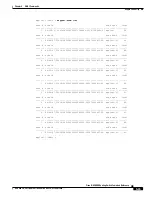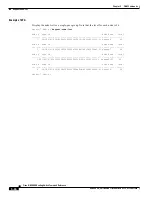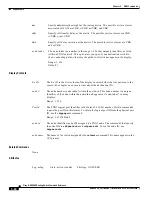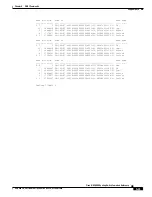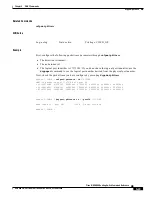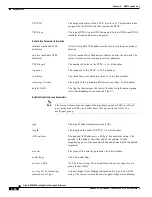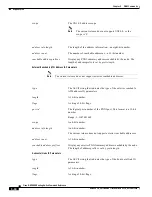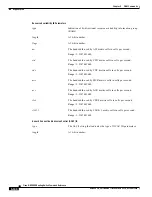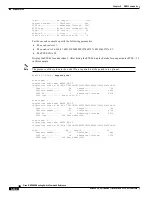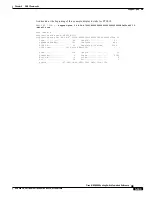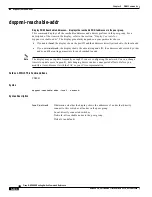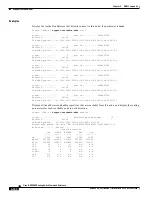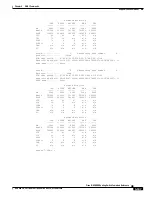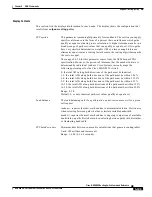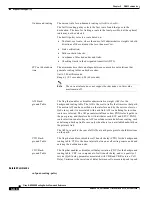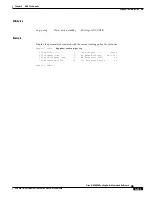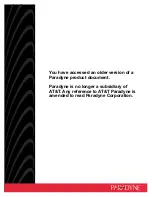
5-96
Cisco MGX 8850 Routing Switch Command Reference
Release 2.0, Part Number 78-10467-04 Rev C0, October 2001
Chapter 5
PNNI Commands
dsppnni-ptse
PTSE ID
The unique identifier of the PTSE. ptse-id is a 32 bit number index
assigned by the PNNI node that created the PTSE.
PTSE type
The type of PTSE is an ASCII designated by the ATM forum PNNI
standard. Broad and narrow categories.
Nodal State Parameter Information
internal reachable ATM
addresses
A list of reachable ATM addresses that are inside the peer group or
network.
exterior reachable ATM
addresses
A list of reachable ATM addresses that are outside the network. The
current release does not support exterior addresses.
PTSE length
The number of bytes in the PTSE—a 16-bit number.
sequence
The sequence of the PTSE—a 32-bit number.
checksum
The checksum error-checking value. A 16-bit hex number.
remaining lifetime
The length of the remaining lifetime (in seconds). 32-bit number.
details for IG
The flag that determines the level of details for information group
(IG) if the detail option is enabled (“true”).
Nodal Information Group Parameters
Note
The current release does not support the logical group node (LGN), preferred
peer group leader (PGL), and other items that pertain to the levels of a
multi-peer group.
type
The type of nodal information group (IG).
length
The length of the nodal IG PTSE. A 16-bit number.
ATM address
The upnode ATM address is a 20-byte, hexadecimal string. The
upnode is the node at the other end of the uplink. It is the
neighboring peer of the ancestor of the node from which the uplink
originates.
priority
The value of the priority parameter, an 8-bit number.
nodal flags
The 8-bit nodal flags.
preferred PGL
A 22-byte hex string. The current release does not support peer
group leader (PGL).
next higher level binding
information IG type
The next higher level binding information IG type is an ASCII
string. The current release does not support higher level binding.




